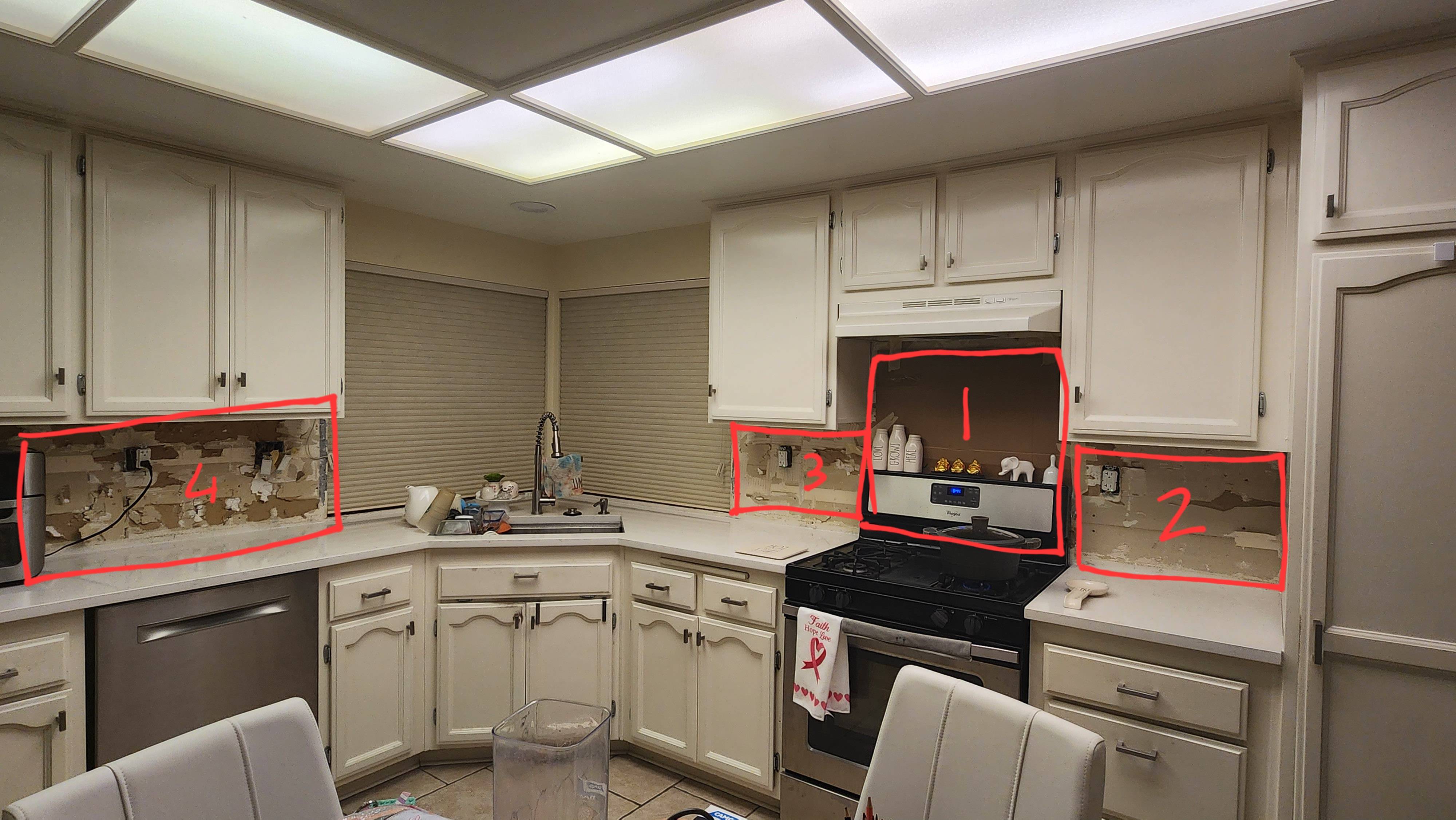Suggestion: Replace the drywall and take the opportunity to upgrade the wiring.
Remove and replace all the drywall in areas 2, 3, and 4. While removedreplace all the outlet boxes with quad ones. Make sure at least two different dedicated breakers serve these boxes. Use metal junction boxes installed robustly on bracing to withstand abuse, and use mud rings carefully selected to be almost flush with the new tile.
Use new, 15A GFCI outlets, one per circuit. Someone "got fancy" and installed 20A outlets there. I would not bother with that. I have never seen a kitchen appliance that requires one. Unless you are washing your kitchen floor with a commercial machine that you borrowed from the supermarket, you don't need these.
If you do want to "get fancy" -- mix and match the dedicated breakers across the new quad boxes. IE make multiple circuits available in each box rather than have one circuit for the left counter and one for the right.
The resulting tile job will look better, not just because you have a nice flush wall to work with, but because the outlets won't wobble and the covers will sit flush and won't crack.

